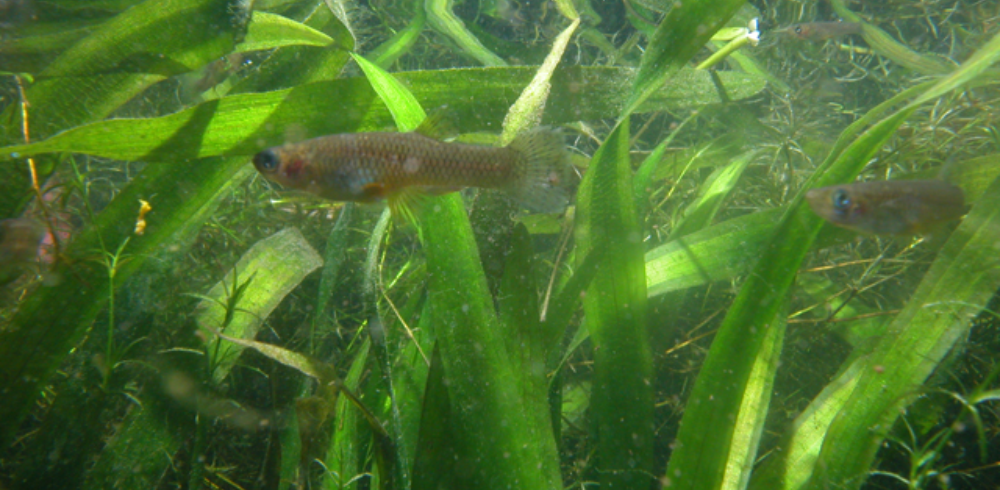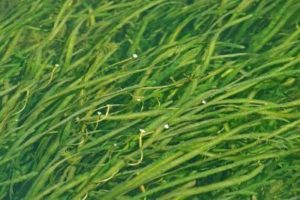Today, we are going to dive a little bit deeper (pardon the pun!) and explore the subtidal zone (fresh water and non-tidal) in the James. Specifically, we are going to examine a plant that is crucial to maintaining good water quality and providing food for wildlife, wild celery.
Also known by its scientific name, Vallisneria americana, wild celery is a species of tape grass that spends its entire life growing underwater. This is not a species of algae, but a true flowering plant! When it comes time to reproduce, flower stalks float near the surface and floating pollen fertilizes the seeds. Seed pods resembling very long beans form and after a time, release hundreds of seeds that sink to the bottom to create new plants. Wild celery is found worldwide, but primarily lives east of the Mississippi in the United States.
 As it grows, wild celery can help trap sediment that is suspended in the water column and uptake excess nutrients such as nitrogen and phosphorous. Eutrophication, too many nutrients in the water, can cause harmful algal blooms and “dead zones” which can kill wildlife, including many species that are important to humans.
As it grows, wild celery can help trap sediment that is suspended in the water column and uptake excess nutrients such as nitrogen and phosphorous. Eutrophication, too many nutrients in the water, can cause harmful algal blooms and “dead zones” which can kill wildlife, including many species that are important to humans.
Wild celery provides cover to juvenile fish and invertebrates, acting like a nursery for them to grow and mature in. The aquarium trade actually propagates this native plant for this use in home tanks! It is also a crucial source of food for the overwintering waterfowl that call the James River Watershed home for part of the year. Tundra swans, canvasbacks, and Atlantic brant all greatly depend on the calories and nutrients afforded by wild celery.
Want to see this remarkable plant for yourself? It’s as simple as going for a paddle on the James River! Be sure to check out our “Connect with the James” guided paddles and join JRA staff for a fun and educational exploration of the river we all call home.


